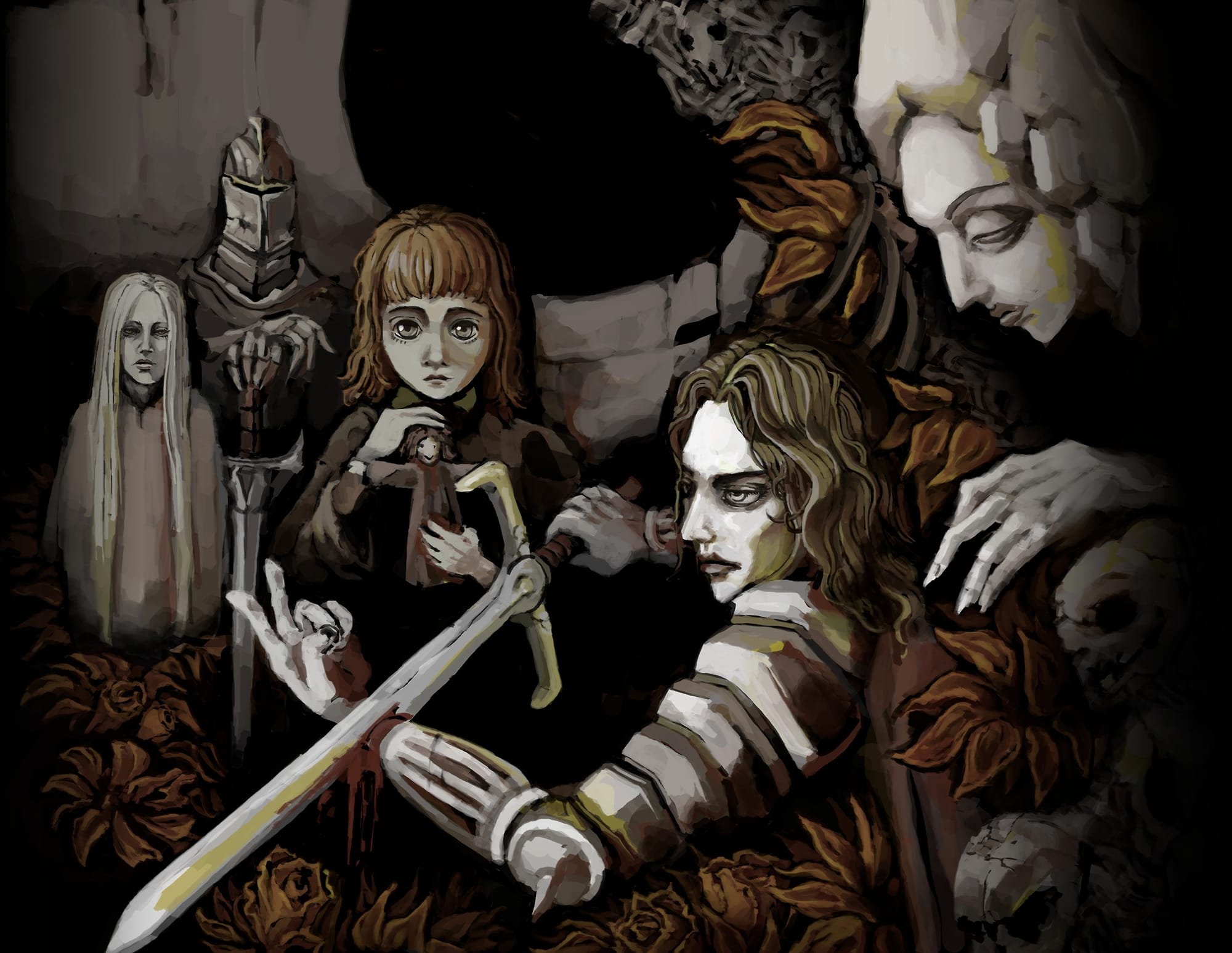
The first time I had a truly terrible time playing a video game was in the mid-90s with the 8-bit Ghosts 'n Goblins. Its punishingly difficult was frustrating, and completing it felt like a barefoot pilgrimage to hell and back. But I couldn't stop playing it. In 2000, Silent Hill gave me a similar feeling, but from a more atmospheric perspective; playing it made me nervous and agonized over the unknown. But despite that stress, I couldn't stop playing it. Later, I discovered Demon's Souls and Dark Souls, where I felt a connection to previous sensations, in worlds that felt truly unfair and oppressively dense to inhabit. It was even a little tiring to navigate them, and I needed the energy to face them. Beyond that, I couldn't stop playing them either.
I thought I wouldn't be plagued by the curse of playing games to have a bad time again so soon. Until I came across Fear & Hunger, a 2018 cult indie horror RPG with a lore that makes Berserk look like a sitcom. My limbs were ripped off, I was psychically broken, I had to make horrible choices, and many other atrocities. And guess what happened? I couldn't stop playing it.
We're going to enter a dungeon that's as cruel and deadly as it gets, and in the process, we're going to think about why we're doing this, why we're playing to have a bad time. And, based on my experience, I'm going to tell you what I think the reward is.
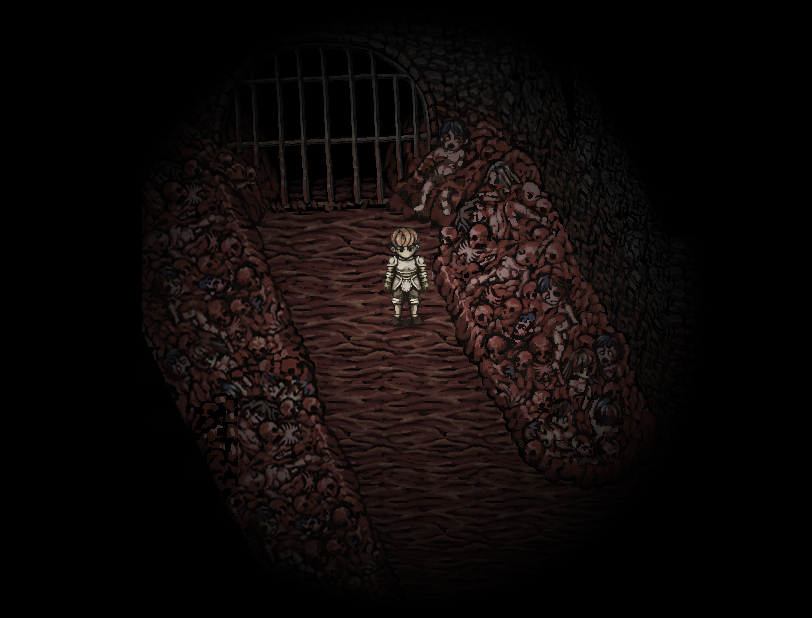
What Happens in the Dungeon of Fear and Hunger?
Fear & Hunger is a dark fantasy RPG made in RPG Maker, a classic Japanese-style role-playing game engine that has been around since 1992 and was all the rage in the 2000s. It has powered numerous indie hits, even if it's uncommon for larger commercial releases. The game started as a side project for developer Miro Haverinen, who made the game alone, including its design, lore, and graphics.
The original idea wasn't to make a "good game" but to create an unfair and sadistic experience. And here we go with a red flag: the game features explicit violence, lots of gore, body horror, sexual brutality, and some pretty strong content. It's clear from the first disclaimer that introduces you to the game, but I think we only understand it when we see the mutant dick of one of the first enemies we encounter and find out what it does to us if it defeats us.
Here we take on the role of one of four "adventurers" who arrive at a fortress-prison for different reasons in search of an inmate, the leader of the mercenary group known as the Knights of the Midnight Sun, called Le'garde. These adventurers are Cahara the mercenary, D'arce the knight, Ragnvaldr the stranger, and Enki the dark priest. But upon arrival, a fog prevents us from leaving the prison and we quickly understand that something is not right at all. As we explore this place, we find an infinite dungeon that connects different planes where new and old gods are at war to occupy the pantheon. This place is the Dungeon of Fear and Hunger: someone opened its gate, and we were swallowed by it.
The game's lore gets increasingly dark and strange, and we're introduced to a gallery of truly unique characters. Within it, our decisions can lead us to one of the game's 10 endings. In the game we start alone (with the character of our choice, but we can recruit people for our party) and we're asked a handful of background questions, which help us finish creating our main character by giving us items or special abilities before starting the game.
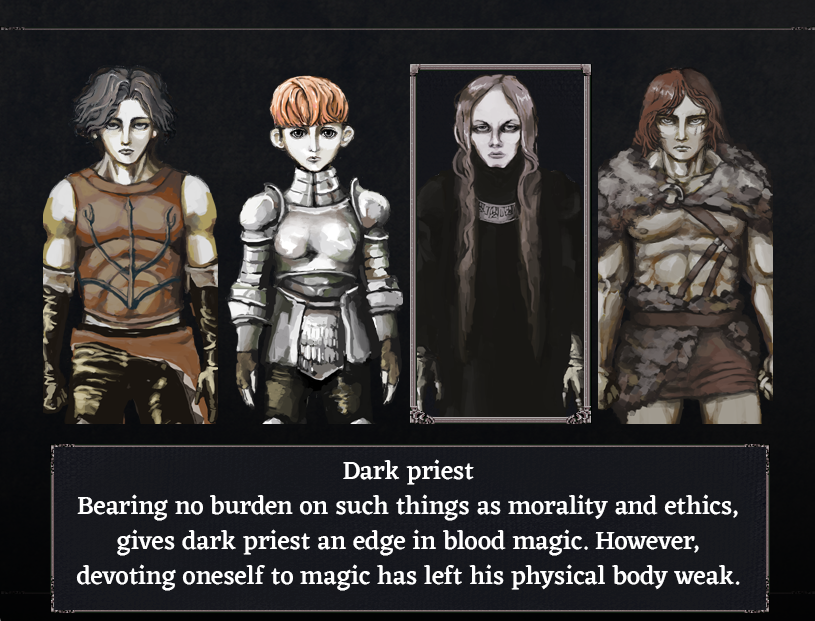
When You're the Dog Food
Without giving away any spoilers, I'd like to give you a sneak peek into the experience of your first few games. What's going to happen to you when you start playing the dungeon for a few minutes is that you're going to be eaten by dogs in your first few minutes. I don't make the rules; that's going to happen. And in your first few games, you're going to try something new, eventually dying a little later (from a trap, a rusty nail, a super-erect ogre, or worse). Each death is a lived experience that helps us understand that while the game looks, feels, and seems to be played like an RPG, in reality we're dealing with something more similar to a survival horror (where resources are scarce and choices matter) and a roguelike (where dying means starting the game over from scratch).
There's something of those frustrating games I mentioned at the beginning that I found in this dungeon. Just as in Ghosts 'n Goblins or Souls it was important to understand the patterns of enemies and traps, because when you die you start over with a reset world, understanding Fear & Hunger as a roguelike is vital to improve in each adventure. On the other hand, trial-and-error and experimentation are very important to know how to use the few resources we have, and to think outside the RPG, like playing the original Silent Hill (1999). That approach, that click, makes the game a brutal but extraordinary adventure.
Unfortunately, this newfound wisdom doesn't make the game easier. It does make it more accessible, but it's not easy. This is coming from someone who, entering what should have been one of the game's final stages, was left in the dark when my torch went out, and I stepped on a rusty nail, lost a leg, and died. And yet, I re-entered the dungeon.
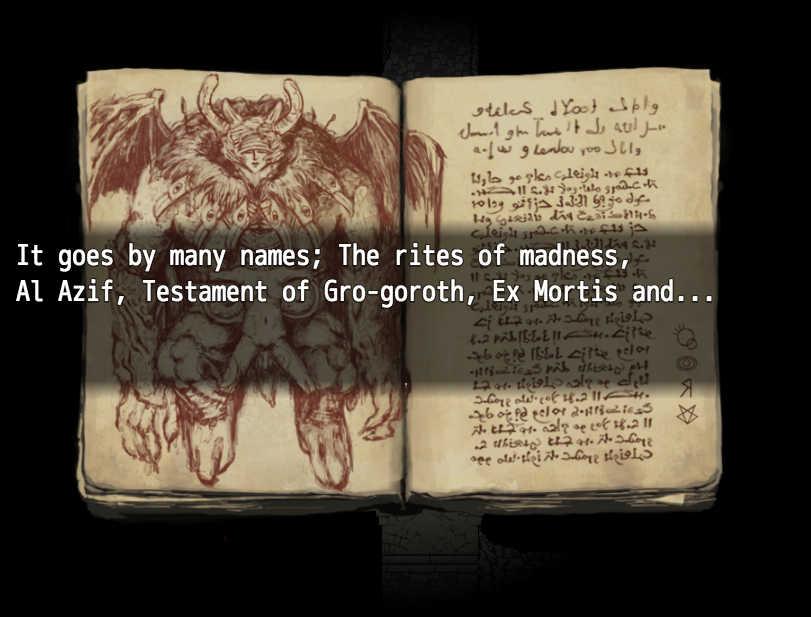
The Mechanics of Suffering
Fear & Hunger boasts a sublime game design. It hides some wild ideas that end up being the core of the experience and that –at least I didn't see in other titles. The first thing we notice when we start to have a little more control is that there's no traditional XP system; progression comes only from equipment and specific items. This means we have to pay attention to the items we find: in the Dark Souls style, these will tell us useful things about both the lore and the gameplay.
For example, books expand the lore and teach key mechanics, such as which herbs heal or poison us, what certain status icons mean, or how to learn to use magic. We learn that information, and if we play again, we no longer need to find that book because we'll already know its contents from the previous game. I think this is an effective way to keep us playing, because every little bit of progress in this dungeon is a huge victory.
Among the attributes we need to manage are hunger and our mind. They don't seem to matter much at first, but neglecting them can be serious. To manage these conditions, we find consumables like food, wine, or herbs, but one lesson I'll leave you with is that just because you can use an item doesn't mean you should —many have downsides. That's why the information we gain game after game is so important.
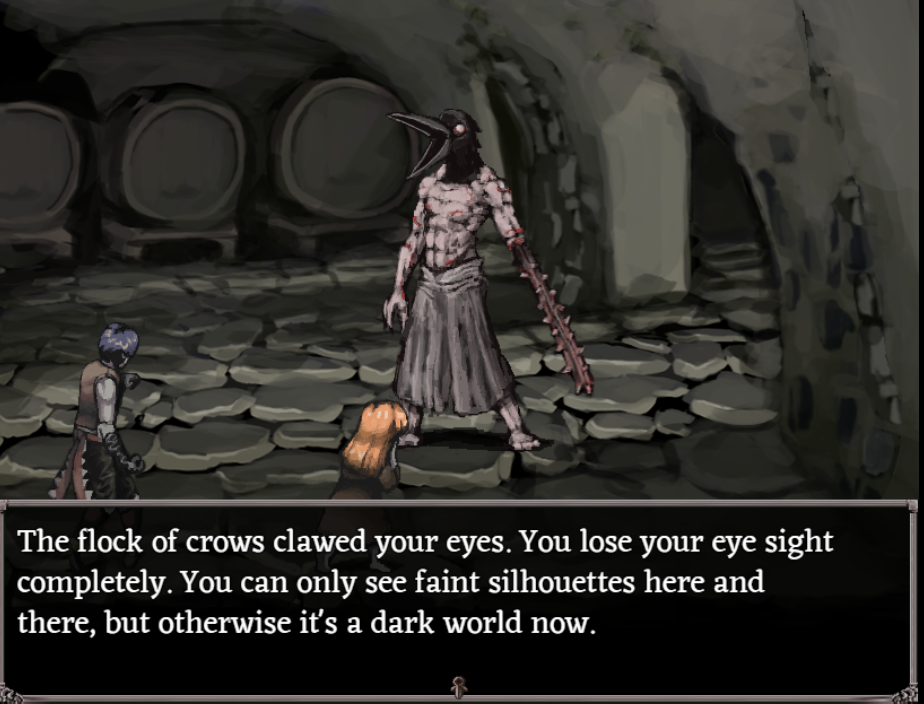
Combat also has its tricks and strategy, but here you don't gain experience (and, hopefully, some items) for winning, as in classic RPGs, but rather for having survived. In its particular combat mode, we find a classic turn-based system with some notable twists. Among the options, we can talk to enemies in the style of Shin Megami Tensei, obtaining information and even distracting some.
Another feature is that targeting system lets you attack specific limbs, and with this, combat becomes very interesting. Enemies generally suffer critical damage from attacks to the head, but to do so we have to set up to land the blow, lowering the chances of missing. For example, some ogres need their legs taken out before you can safely go for the head. Combat is very tough, enemies do a lot of damage and, if you survive, in the best case scenario you end up a little broken.
But there's a mechanic that keeps the player in a constant state of vulnerability. At certain times (when opening chests, entering combat, or finding a bed to save the game), the game will show us a coin animation, which gives us a 50% chance that what we're about to do will go horribly wrong. With chests, failing simply means we won't find anything, but in a game with scarce resources that can be fatal. In combat, if this roll appears, it's because the enemy is about to make a fatal attack on one of our characters.
But I think the worst time to flip this coin is when you save your game. When you find a bed, you can save, but before that, you flip a coin. If you fail, a monster will find you and start a fight. This is perhaps the cruellest mechanic I've encountered, because it makes it impossible for you to let your guard down, even to leave the game. There are ways to reduce your losing streak, like "lucky coins" that give you an extra roll, but as you can imagine, there aren't many.
Why Do We Seek Out These Torturous Adventures?
Everything I told you about this game seems unfair and quite cruel, but in that asymmetrical tone where we are the one who comes to lose, being able to decipher its forms and overcome the obstacles represents a divine reward. There was a lot of talk about the difficulty of games with the arrival of Souls, and we didn't reach a consensus between players or studios. For some, games have to be accessible in their difficulty so that they can be enjoyed by more players. I am of the opinion that difficulty can be part of the game design and a feature of the game.
Being the underdog puts us in a role where trying again is the only answer, and when we start to make progress, the satisfaction is enormous. If you played a Souls game, that moment when you killed a boss with a strategy you came up with generates incredible happiness. Those challenges in Fear & Hunger are also in a world that invites you to explore it, carefully, to live it and modify it with your decisions. I can't speak for everyone, but enduring hostile worlds —whether in games, films, or comics—makes me feel resilient. I could do this; my reward is being able to tell this experience and be happy to have overcome it.
Fear & Hunger can be purchased on Steam or itch.io. A sequel came out in 2023, which I highly recommend, but it's not the same as the first, even though it's set in the same world. I invite you to challenge yourself with this dungeon. Although I haven't completed every ending and there were days when I didn't feel like playing it, I managed to survive it and found myself rewarded with a great game. Take courage and enter the dungeon of fear and hunger: I believe in you.

